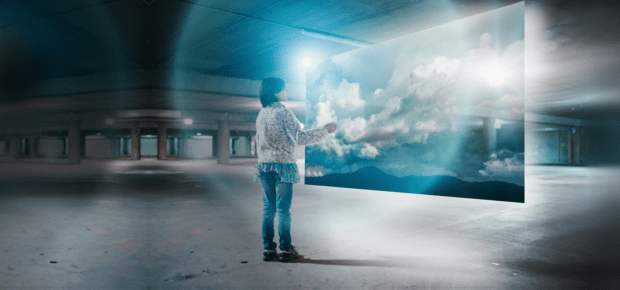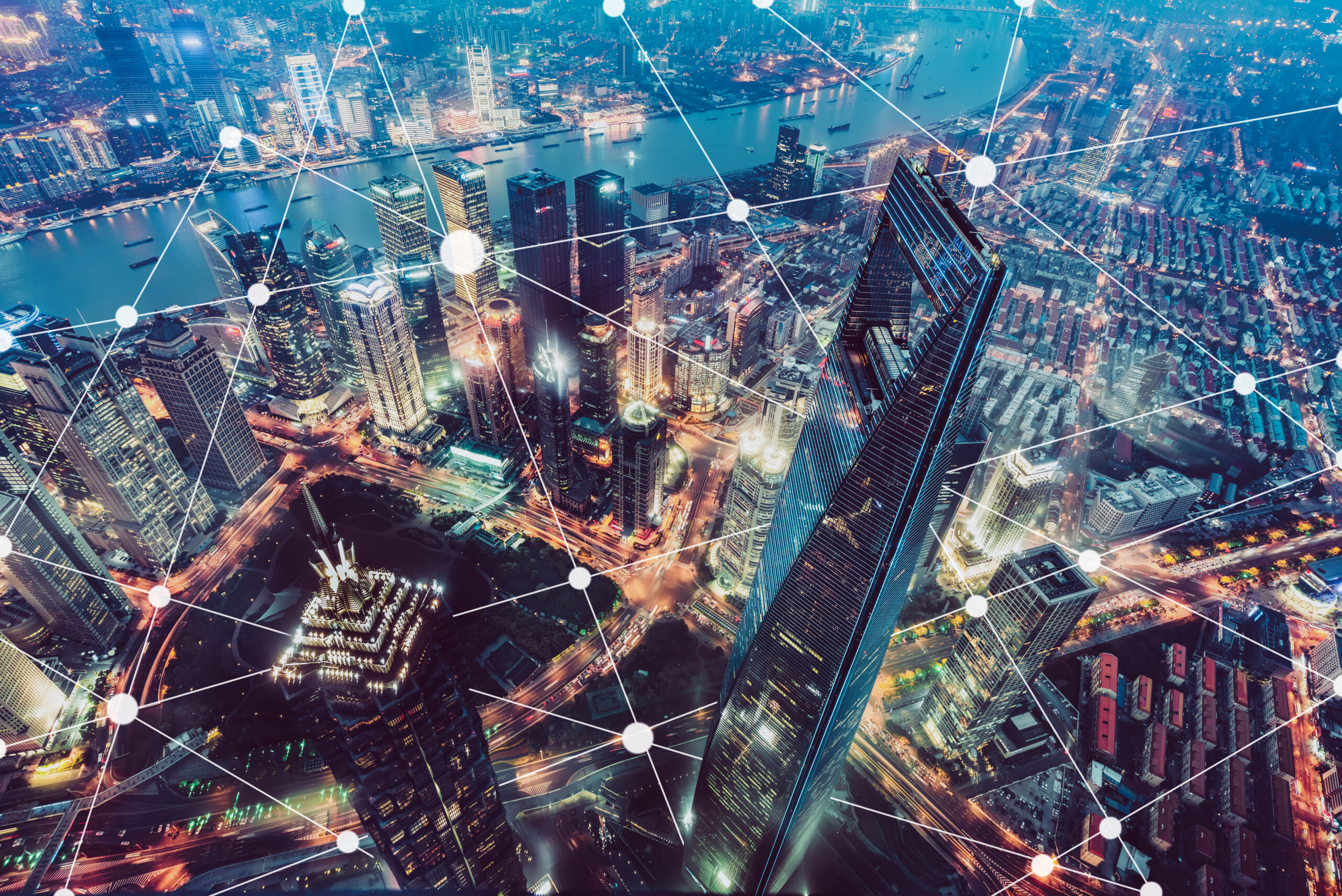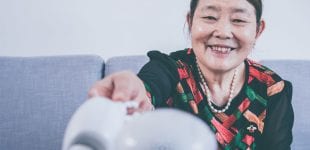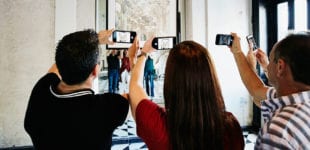October 22, 2018
Feeling immersed in virtual reality is a central goal of much of the work that goes into it.
Improving headsets, haptic feedback and other elements to create a true sense of presence is no easy task. One researcher addressing the challenge is Anderson Maciel, IEEE member and Associate Professor at the Federal University of Rio Grande do Sul (UFRGS) in Brazil.
“We evaluate the system’s capability to generate in human subjects the sense of presence in the virtual world. Presence is the human disposition for suspension of disbelief, to forget that the virtual is virtual,” Maciel says.
And the bar for that is quite high: “Any misalignment can cause cybersickness; discomfort, with symptoms like dizziness, nausea, eye strain, etc.”
Achieving a sense of presence starts with the challenge of how to measure it. Since it’s a subjective feeling, asking the participant questions makes it hard to develop consistent data sets. To Maciel, it’s important to try more objective measures, like “heart rate, stress level, eye tracking, pupil dilation, brain electrical patterns and other parameters” to help scientists understand when and why users lose their sense of presence in VR.
These efforts are part of a larger goal of helping people. For Maciel, “training simulations, health applications, behavior studies… they could all change how people live for the better.”
By establishing measures of presence, it becomes easier to work on and test specific VR technologies. Realistic computer graphics are central to virtual realism; accurately capturing body language and emotional cues is important for building virtual collaborative workspaces.
Improving these elements leads to important outcomes, like practicing customized surgeries in VR, and even allowing for surgery through telepresence systems. Here, “a human surgeon in a reference hospital of a great metropolis will guide a robot surgeon to operate on a patient located far from urban areas, in the battlefield or in space,” says Maciel.
When it comes to physical performance, athletes are starting to use VR to prepare for events. For example, American ski racers work on their rhythm using VR, and some use it in their rehabilitation from injury.
Similar technology also has potential for people suffering from anxiety and post-traumatic stress disorder. If someone gets stressed by public speaking, for example, The Institute found a VR app that can simulate speaking to a crowded room, complete with crowd noise. They also came across VR being used to treat soldiers with PTSD as they get adjusted to civilian life. Separate research on IEEE Xplore uses VR and AR to induce anxiety, gradually helping participants become less claustrophobic.
This article just begins to describe of how much promise these technologies have for the lives of people around the world. Keep an eye on our VR/MR section over the next two months for a number of videos, stories and more featuring IEEE experts like Anderson Maciel.






 Bits, Bytes, Buildings and Bridges: Digital-Driven Infrastructure
Bits, Bytes, Buildings and Bridges: Digital-Driven Infrastructure Impact of Technology in 2024
Impact of Technology in 2024 Emerging AI Cybersecurity Challenges and Solutions
Emerging AI Cybersecurity Challenges and Solutions The Skies are Unlimited
The Skies are Unlimited Smart Cities 2030: How Tech is Reshaping Urbanscapes
Smart Cities 2030: How Tech is Reshaping Urbanscapes Impact of Technology 2023
Impact of Technology 2023 Cybersecurity for Life-Changing Innovations
Cybersecurity for Life-Changing Innovations Smarter Wearables Healthier Life
Smarter Wearables Healthier Life Infrastructure In Motion
Infrastructure In Motion The Impact of Tech in 2022 and Beyond
The Impact of Tech in 2022 and Beyond Cybersecurity, Technology and Protecting Our World
Cybersecurity, Technology and Protecting Our World How Technology Helps us Understand Our Health and Wellness
How Technology Helps us Understand Our Health and Wellness The Resilience of Humanity
The Resilience of Humanity Harnessing and Sustaining our Natural Resources
Harnessing and Sustaining our Natural Resources Creating Healthy Spaces Through Technology
Creating Healthy Spaces Through Technology Exceptional Infrastructure Challenges, Technology and Humanity
Exceptional Infrastructure Challenges, Technology and Humanity The Global Impact of IEEE's 802 Standards
The Global Impact of IEEE's 802 Standards Scenes of our Cyber Lives: The Security Threats and Technology Solutions Protecting Us
Scenes of our Cyber Lives: The Security Threats and Technology Solutions Protecting Us How Millennial Parents are Embracing Health and Wellness Technologies for Their Generation Alpha Kids
How Millennial Parents are Embracing Health and Wellness Technologies for Their Generation Alpha Kids Space Exploration, Technology and Our Lives
Space Exploration, Technology and Our Lives Global Innovation and the Environment
Global Innovation and the Environment How Technology, Privacy and Security are Changing Each Other (And Us)
How Technology, Privacy and Security are Changing Each Other (And Us) Find us in booth 31506, LVCC South Hall 3 and experience the Technology Moon Walk
Find us in booth 31506, LVCC South Hall 3 and experience the Technology Moon Walk Virtual and Mixed Reality
Virtual and Mixed Reality How Robots are Improving our Health
How Robots are Improving our Health IEEE Experts and the Robots They are Teaching
IEEE Experts and the Robots They are Teaching See how millennial parents around the world see AI impacting the lives of their tech-infused offspring
See how millennial parents around the world see AI impacting the lives of their tech-infused offspring Take the journey from farm to table and learn how IoT will help us reach the rising demand for food production
Take the journey from farm to table and learn how IoT will help us reach the rising demand for food production Watch technical experts discuss the latest cyber threats
Watch technical experts discuss the latest cyber threats Explore how researchers, teachers, explorers, healthcare and medical professionals use immersive technologies
Explore how researchers, teachers, explorers, healthcare and medical professionals use immersive technologies Follow the timeline to see how Generation AI will be impacted by technology
Follow the timeline to see how Generation AI will be impacted by technology Learn how your IoT data can be used by experiencing a day in a connected life
Learn how your IoT data can be used by experiencing a day in a connected life Listen to technical experts discuss the biggest security threats today
Listen to technical experts discuss the biggest security threats today See how tech has influenced and evolved with the Games
See how tech has influenced and evolved with the Games Enter our virtual home to explore the IoT (Internet of Things) technologies
Enter our virtual home to explore the IoT (Internet of Things) technologies Explore an interactive map showcasing exciting innovations in robotics
Explore an interactive map showcasing exciting innovations in robotics Interactively explore A.I. in recent Hollywood movies
Interactively explore A.I. in recent Hollywood movies Get immersed in technologies that will improve patients' lives
Get immersed in technologies that will improve patients' lives